The sacking of José Mourinho to begin the calendar year marked the beginning of an incredible change of fortune for those invested in AS Roma.
Having guided them to their first piece of silverware in 14 years after beating Feyenoord in the inaugural UEFA Europa Conference League final, Giallorossi fans were certainly bemused by the decision to dismiss such a beloved and legendary figure.
However, with tactical issues and apparent negativity creeping into play, it would appear that the Portuguese manager left a bitter taste in the mouths of the Roma ownership.
With this in mind, the decision to select Mourinho’s successor was equally as unexpected, as they hired Daniele De Rossi on a short-term contract.
Whilst the former defensive midfielder certainly embodied the city of Rome in his 18-year career for his hometown club, his managerial CV was particularly unimpressive after a minimal stint at SPAL was cut short after only four months.
However, this tactical analysis and scout report will begin to highlight how De Rossi’s expansive tactics and offensive freedom have allowed his Roma side to flourish in the past few months.
This analysis will begin to address Danielle De Rossi’s philosophy and preferred setup, shedding light on his project and ability to assemble an attacking powerhouse with enough output to dwarf the most successful teams in Serie A since his appointment.
The change of formation and initial shape
When beginning to highlight how AS Roma has transformed their future over a matter of months, it is important to address how they got into the negative period in the first place.
As we know from his decades in elite football, José Mourinho represented a more conservative footballing style, focused on solidity in the defensive line but more of a passive method of pressing.
His frequently used 5-3-2 created an opportunity for three central defenders and three central midfielders to sit deeper and negate spaces to play through the centre of the pitch, dropping into a low block with more defensive-minded wing backs.
His desire to prevent attacking opportunities for their opposition when caught in transition led to Roma losing their attacking fluidity and forcing the ball forward into their final third with minimal accuracy.
Whilst this conservative stance was extremely fruitful in knockout competitions, where conceding goals was vital to winning, it was apparent that this way of playing was detrimental to their league campaigns. They found themselves ninth in Serie A before Mourinho was sacked.
On the contrary, Danielle De Rossi’s style of play has undoubtedly rejuvenated the attacking spark and excitement within his squad.
Opting for the more progressive 4-3-3, he allows his defensive line to remain compact but offers an additional element of creativity.
Both the left back and right back are given increased freedom to impact play in the final third.
His system has appeared to reinvigorate the majority of Roma’s creative talents, playing nicely into their strengths. As a result, we have observed a significant increase in attacking output.
This is only further supported by the standout performances from dynamic stars like Lorenzo Pellegrini and Paulo Dybala, who have been released from their shackles and given the freedom to orchestrate for Roma.
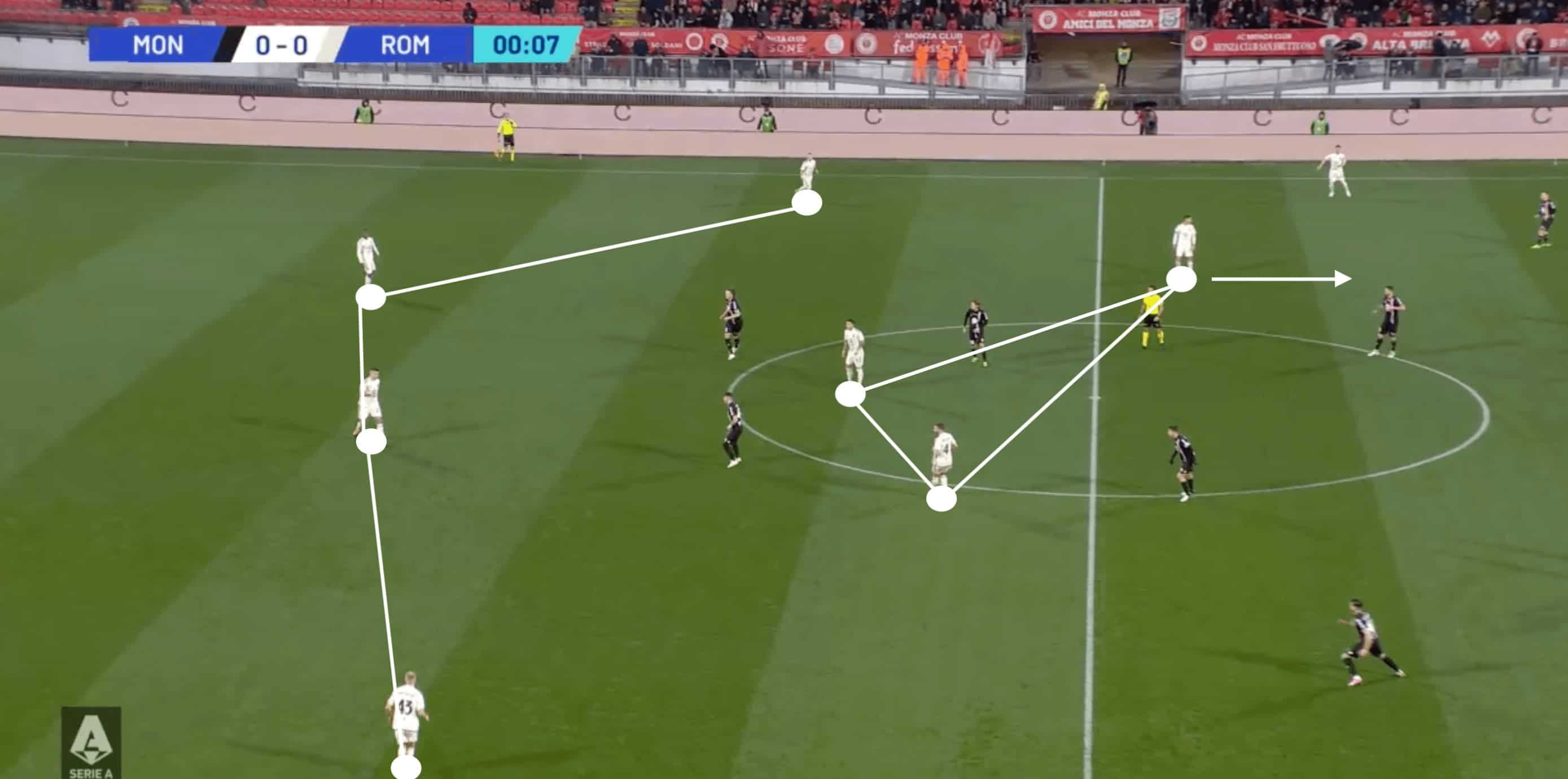
The element of tactical flexibility is also imperative for success at the highest level- something that De Rossi has recognised and begun to incorporate depending on the strength of the opponent.
Due to this Roma side’s familiarity with the more traditional variations of the five-at-the-back formations, De Rossi has produced variations of the 3-5-2.
This allowed Roma to be more structurally compact, most notably against Inter and Torino, without sacrificing the progressive nature that had been lost over the past couple of years.
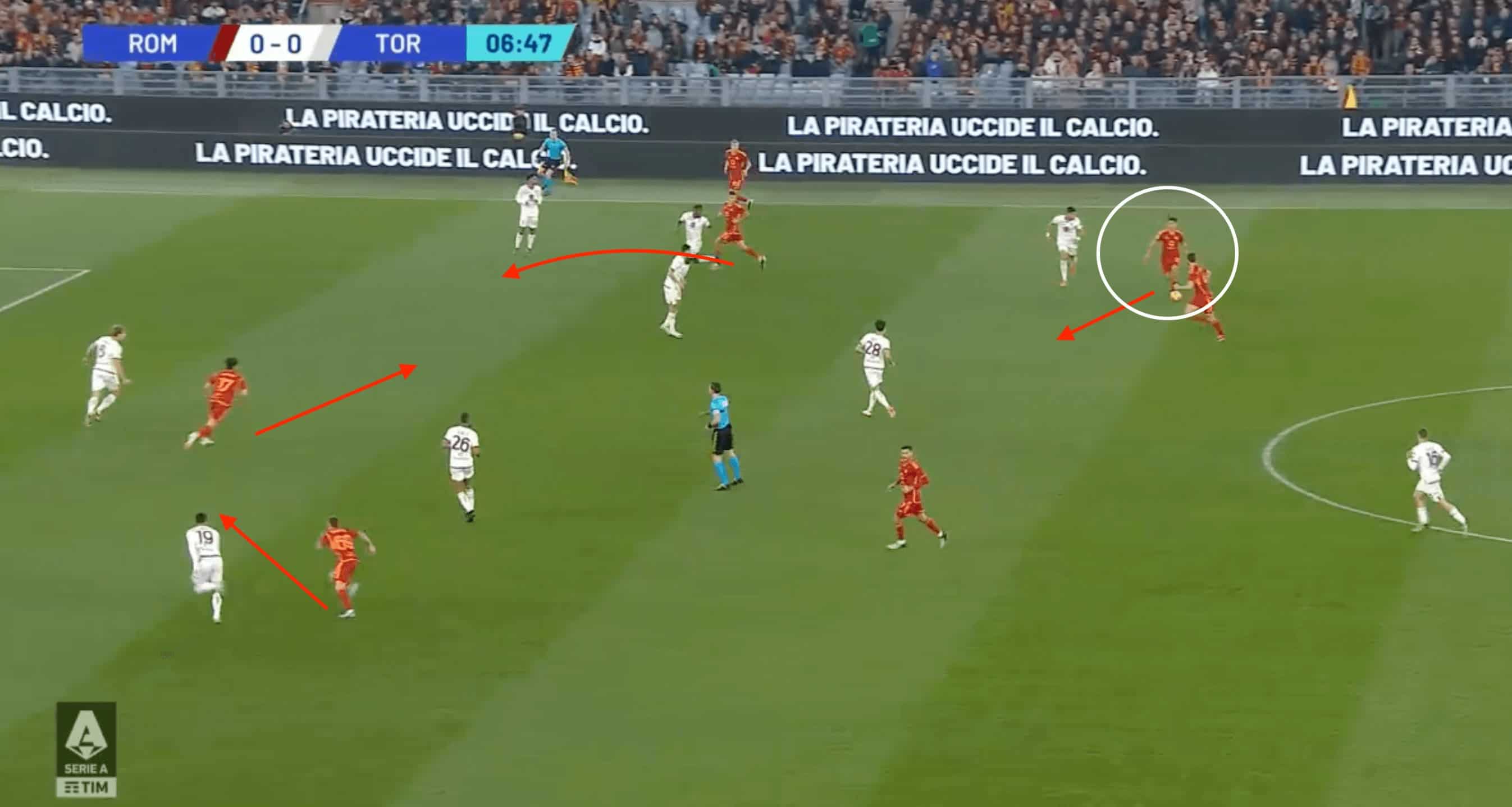
Impressive in possession
Since De Rossi has taken the reigns in the capital, Roma’s attacking style has been night and day when compared to that of their former manager.
Having successfully recorded 2.85 goals per game (gpg) since De Rossi’s first match in charge against Hellas Verona, this significantly trumps the 1.5 gpg recorded under Mourinho’s watch in 2023/24.
Their statistics’ upward trajectory is only reinforced by their expected goal figures, which show a non-penalty goal (npG) minus non-penalty expected goals (npxG) figure of +11.5.
In simpler terms, this would begin to suggest that Roma are significantly exceeding their ability to find the net despite not having produced a corresponding amount of optimal goal-scoring opportunities.
This impressive form has only been strengthened by the implementation of De Rossi, and they now top the Serie A table for this metric.

When observing how Roma have looked to initiate their first phase of build-up play, it is clear that De Rossi has taken inspiration from some of the great modern managers with how he sets up his defensive line.
We can see Roma’s full-backs looking to progress further forward higher up the pitch to create a progressive passing outlet, with the two central defenders offering support to the goalkeeper to play out from the back.
The double-pivot formed between Leandro Paredes and Bryan Cristante has been incredibly successful. The two complement each other nicely.
With Paredes’s defensive solidity dictating play slightly deeper, Cristante has been granted the freedom to use his impressive ball-carrying skills.
Their double pivot, in turn, allows for the advancement of Lorenzo Pellegrini, an important figure who was lost toward the end of Mourinho’s tenure.
The Italian midfielder is incredibly proficient with the ball, something that is further demonstrated by his opportunities to push higher into the No.10 role and form more of an attacking quartet.
Having strayed away from attacking shapes that had been deemed to be too isolated in the past, De Rossi has undoubtedly strengthened the output of Argentinian superstar Paulo Dybala.
With the advancement of Karsdorp or Kristensen on the right flank, Dybala finds himself drifting further inside and abandoning the traditional right-winger role it would suggest when looking at the lineup.
The ability to play closer to both Lukaku and Pellegrini has significantly improved De Rossi’s side’s attacking fluidity. Dybala encapsulated this success with an impressive game-winning hat-trick against Torino.
One would be correct in suggesting that Roma’s new forward three’s asymmetrical shape begins to cause structural problems for the opposition and creates opportunities to exploit space behind the defensive line.
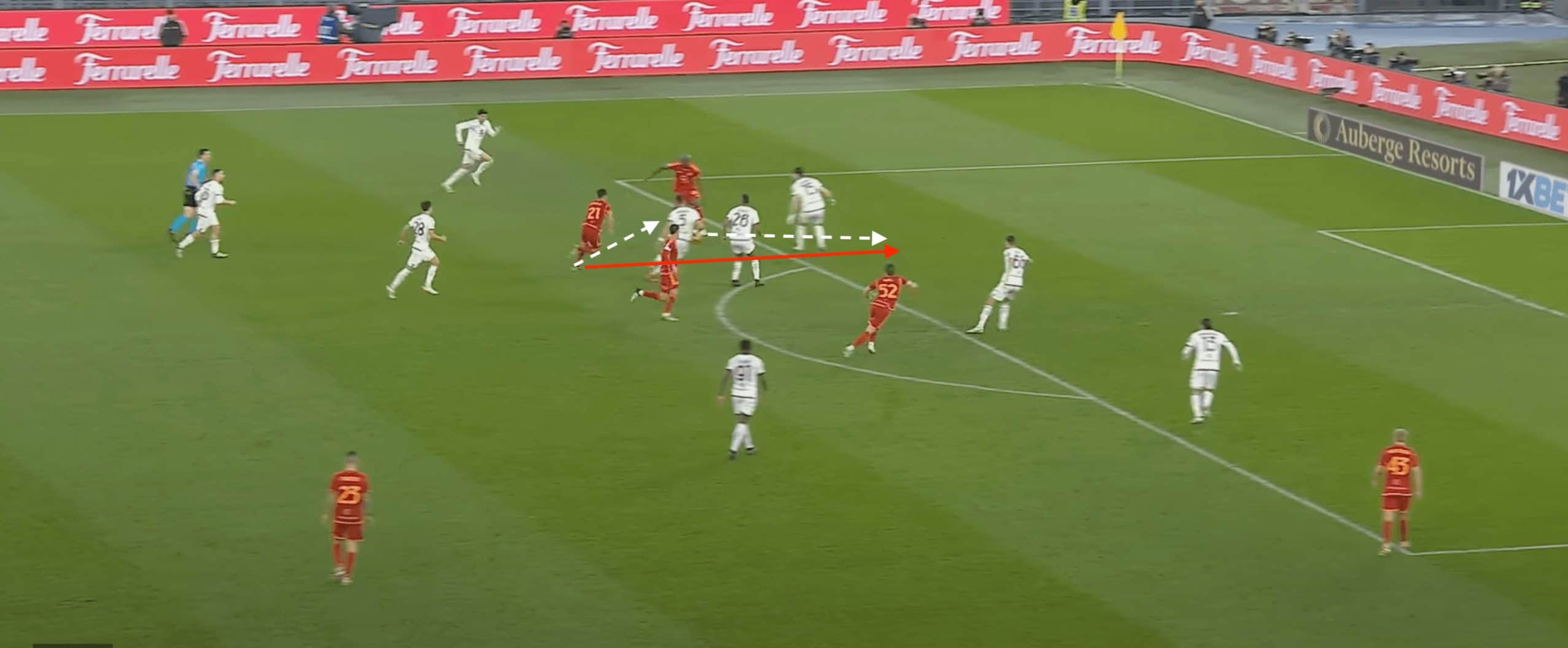
Maintaining defensive solidity
When deciding to step away from Mourinho’s defensive structure, it was imperative that the new-look Roma protected themselves against points of weakness with a new expansive way of playing.
Their out-of-possession shape would appear to resemble that of a 4-4-2, much like the majority of modern managers who have found success with the balanced defensive style.
With this in mind, Dybala and Lukaku form a striking partnership with a desire to actively press from the front.
This then usually sees El Shaarawy having to drop deeper to occupy the left midfield role, with Cristante sliding over to occupy space on the right flank.
One of the real revelations of the De Rossi takeover would have to be Bryan Cristante’s extended usage and his ability to fit various roles like a glove while remaining effective in each position.
In times of need, we have also seen De Rossi
revert to a more traditional 5-3-2to strengthen the defensive numbers and execute a more effective low block.
This sees Stephan El Shaaraway dropping deeper into the left-wing-back role while Spinazzola or Angeliño assume their position in left central defence.
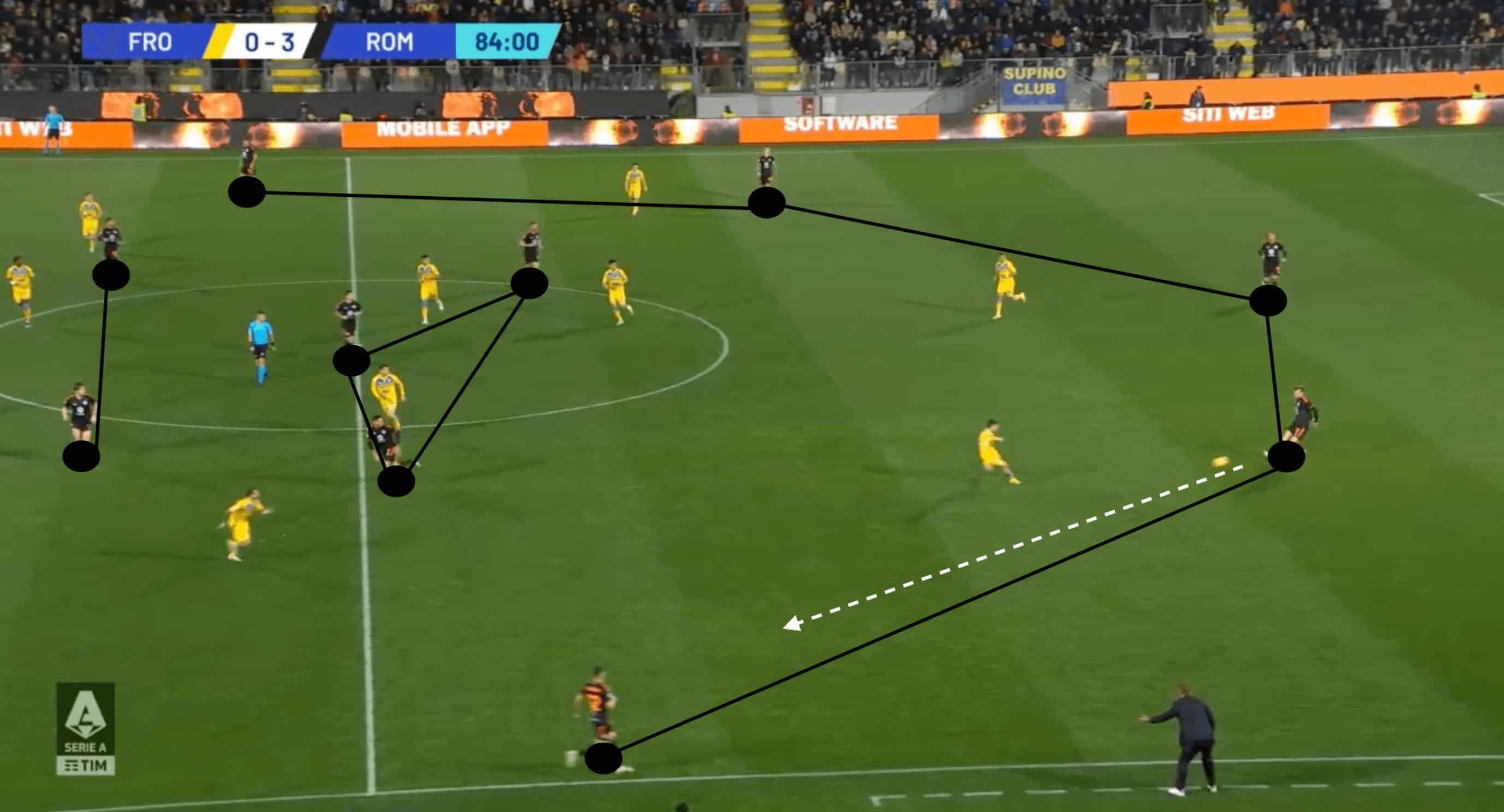
Areas of improvement
Although De Rossi’s time as head coach has certainly been beneficial, it is important to remember the minimal sample size of matches he has managed and their corresponding opposition.
There have been moments in the previous matches where issues with this Roma side have been amplified by their inexperience playing within an unfamiliar stylistic manner.
In De Rossi’s only defeat thus far against Italian powerhouses Inter, Simone Inzaghi’s side clearly nullified the key areas of Roma’s attacking success accurately.
With Dybala given added attacking freedom, we often see him dropping deeper and linking up with the double pivot to receive and progress the ball.
However, in this match, it was clear that Inter had placed increased midfield attention on the Argentine, successfully marking him out of the match and reducing his direct input.
The additional factor which was so detrimental to their attack would also be that this added depth and inability to receive the ball cleanly increased the distance between Dybala and Roma’s other offensive contributors.
This reduced the effective partnerships that have been so prosperous, leaving the likes of Lukaku isolated and easily engulfed by the Inter defensive line.
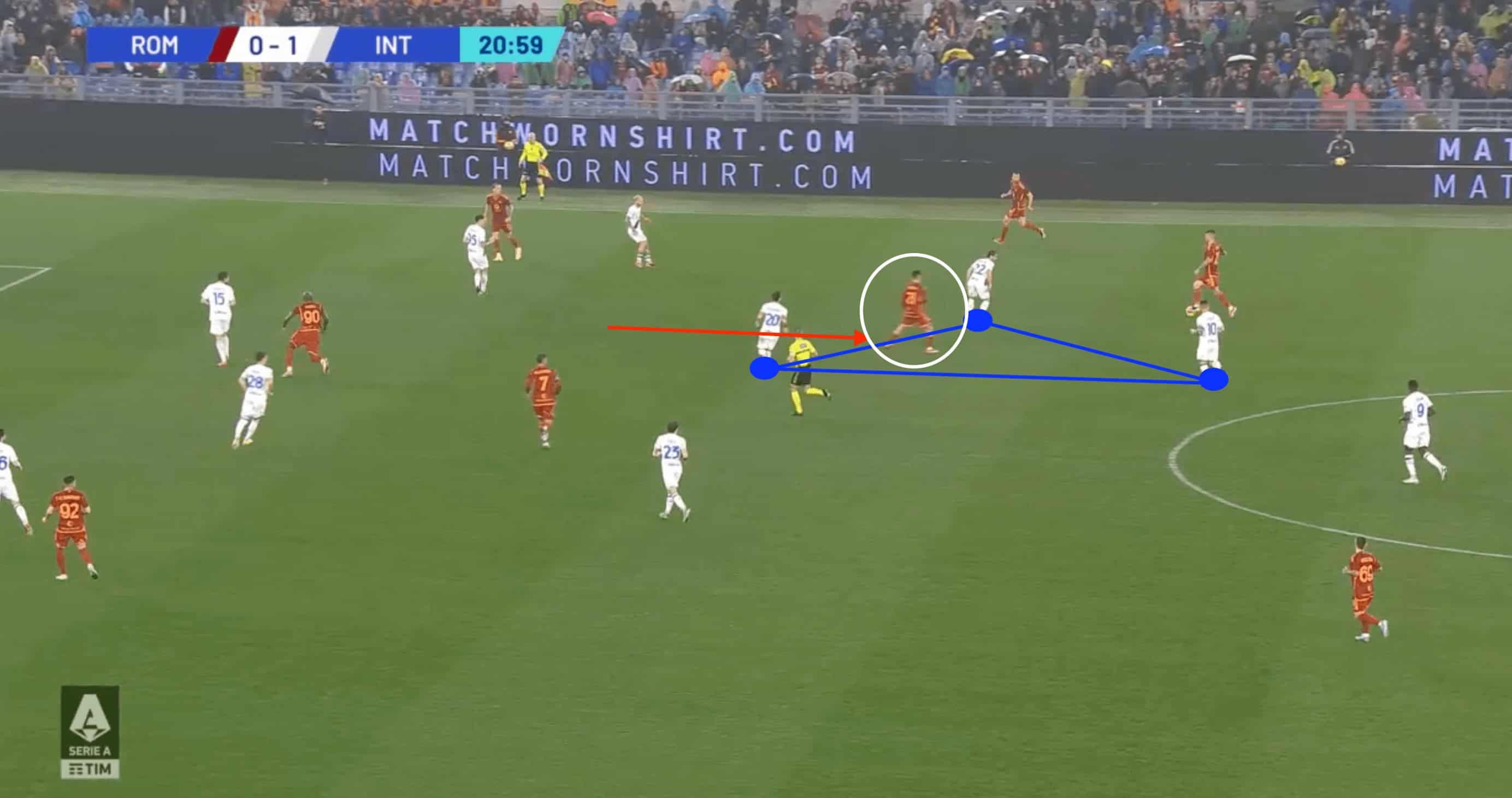
On the other hand, the period of adjusting between a more passive press under Mourinho and a more energetic man-oriented press under De Rossi has caused issues.
The players have adapted to being more proactive in an effort to regain possession at the first opportunity, which has caused moments of vulnerability when overcommitting in the tackle.
Due to the fact that their pressing is so dependent on man-to-man marking and being successful in the duel, if that happens to be bypassed, this spells trouble for Roma, inviting pressure upon their goal.
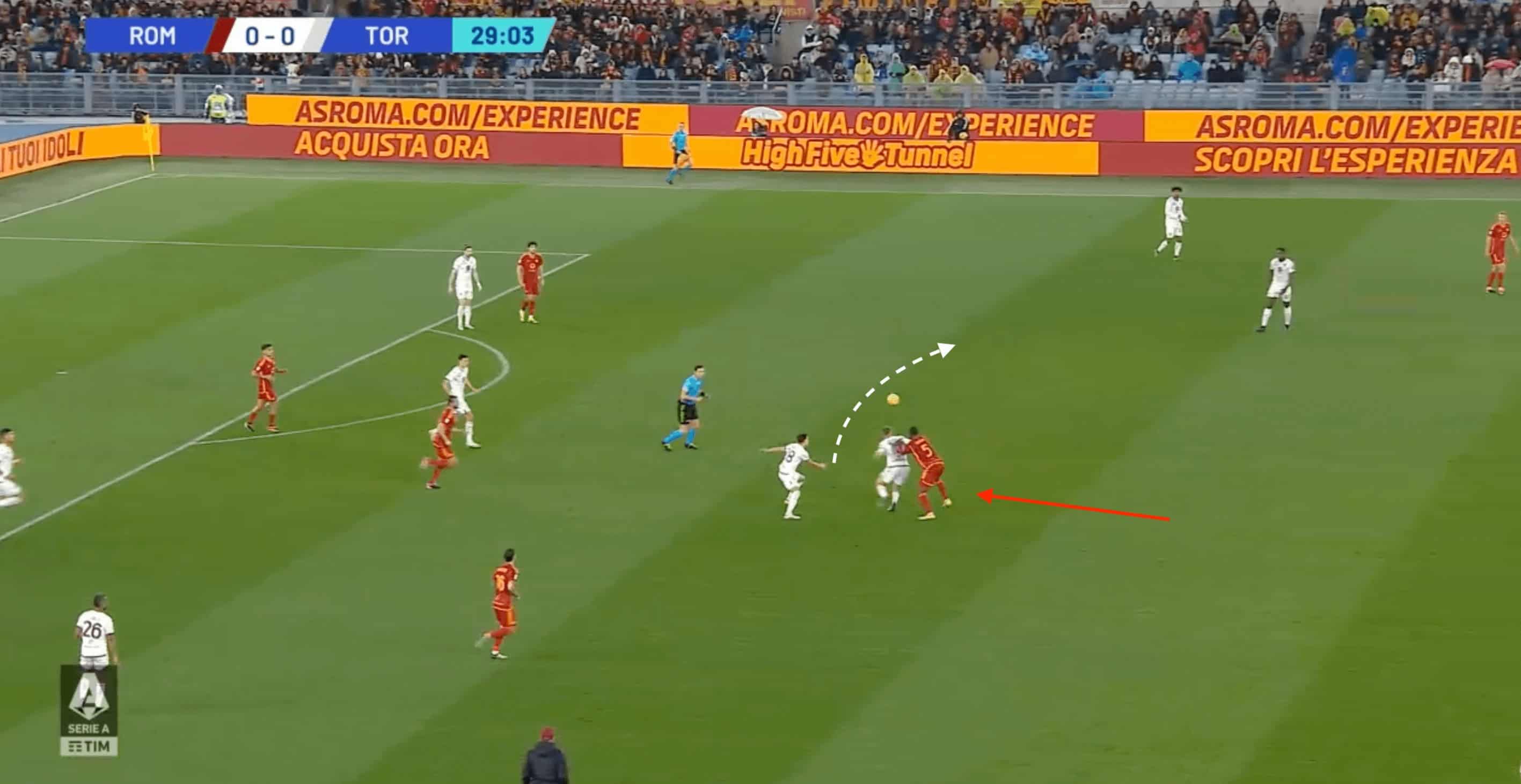
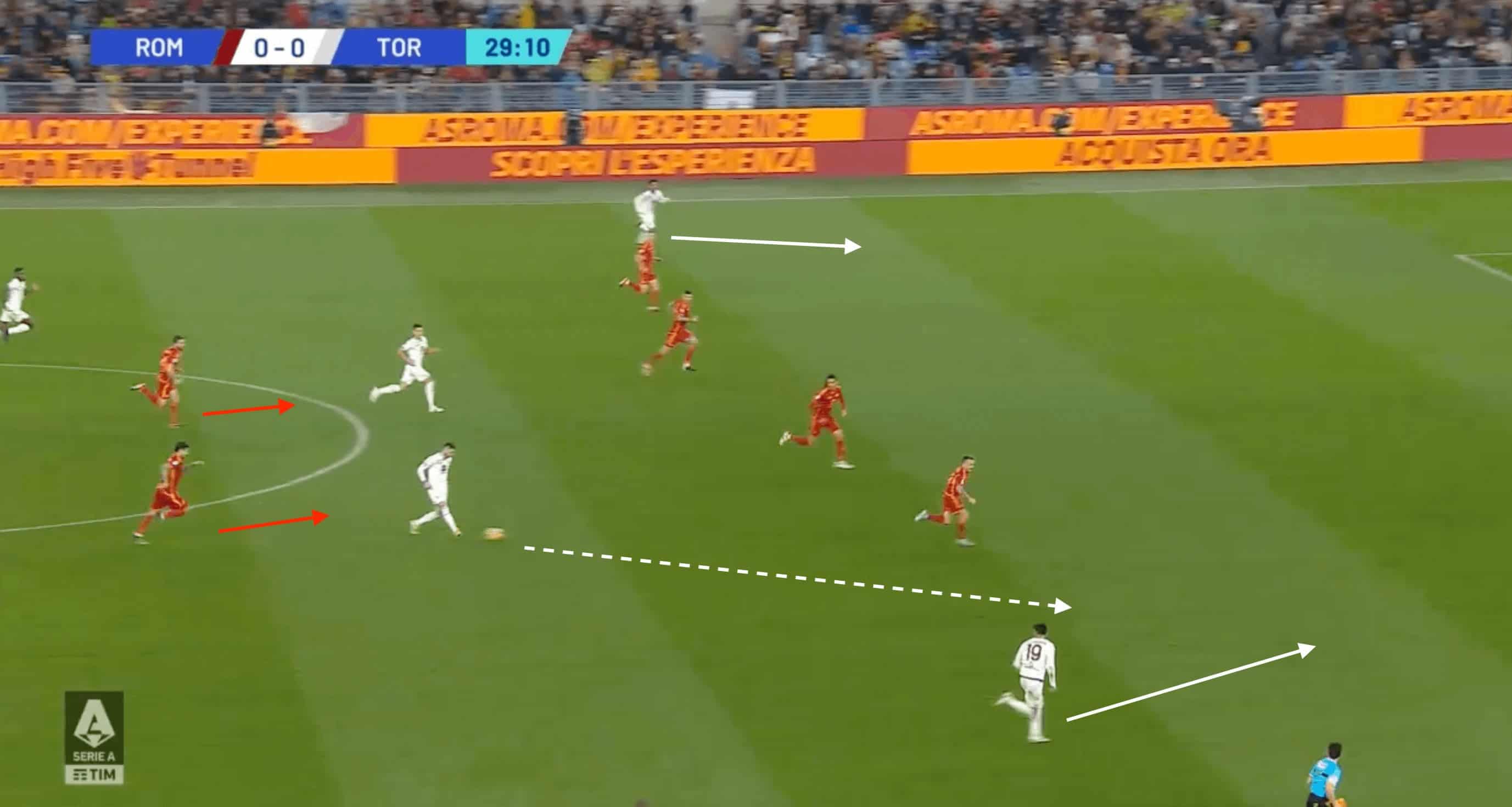
Conclusion
Despite his short time in charge at Roma, it is clear that in De Rossi, the fans have a leader who has created incredible amounts of squad harmony and reinvigorated the passion of the city.
His successes appear to have earned him an extended contract, which will give him the opportunity to progress with his managerial journey, at least for the next season.
Something that was often disregarded under Mourinho was the club’s success in Serie A, but this is far from the case nowadays, with Roma sitting nicely in fifth place in the fight for UEFA Champions League qualification.
As we approach the business end of the season, Roma fans will hope that this purple patch last a little bit longer- with the opportunity to exceed expectations on both the domestic and European stages.

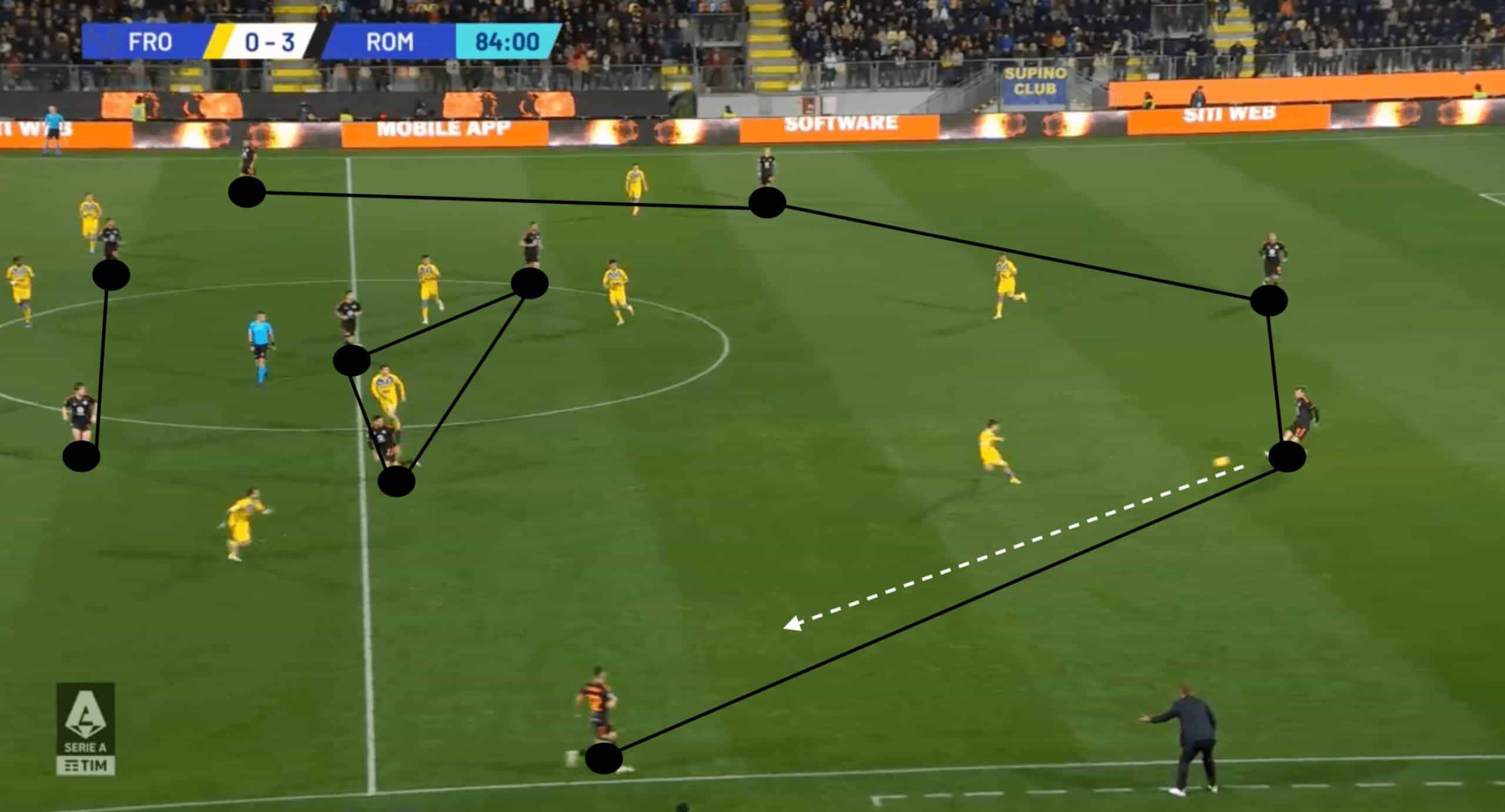



Comments